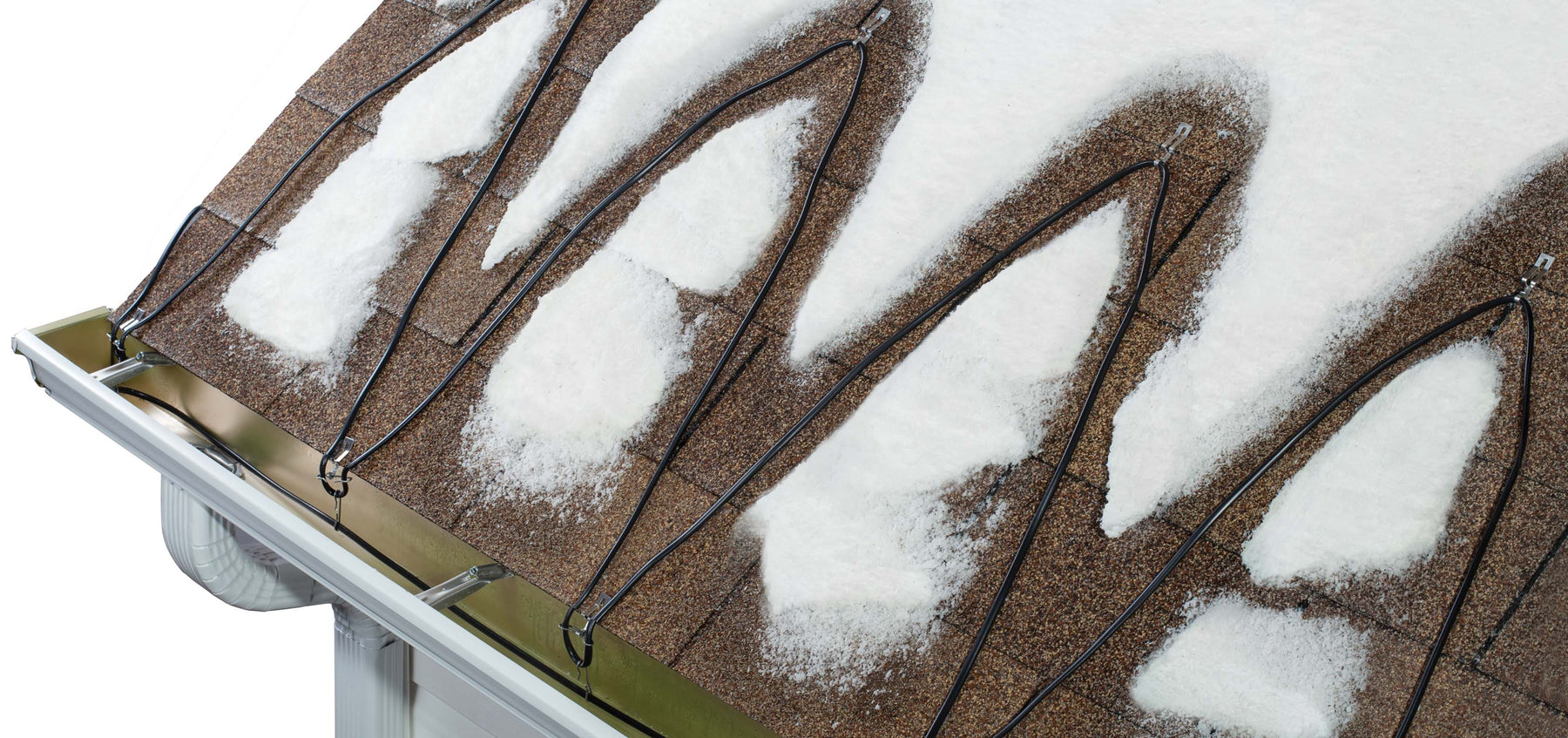
Should I protect my home from harsh winters with Roof Deicing Cables?
There are many harsh winter climates within the US and depending upon the location of your home you may experience micro-climates that leaves your home buried in winter snow. The main purpose of deicing cables such as roof heating cables is to keep your home safe from the hazards of extreme cold temperatures. In places where the temperatures are extremely cold like Canada, Alaska, Pacific Northwest and New England the snow at times gets to be so dense it can pile so high and deep making the weight of the snow on your roof unsafe for the inhabitants. Or snow can blanket the top of your roof and freeze the water in the pipelines throughout a home. When snow blankets a roof, typically the insulated part of the roof that is attached to the attic causes the ice to melt due to the heat rising from inside the house. When the snow melts off the insulated part of the roof, the melting snow will leak down to the lower part of the roof or onto the eaves of the house.
As a quick refresher, eaves are the part of a roof that projects out horizontally beyond the side of the structure it covers. They can have practical functions, such as to provide shade and protection from rain, as well as aesthetic functions, creating a definite distinction between walls and roof
The eave of the house has no insulation or attic heat so the snow usually remains frozen there. When you mix water and snow you get ice which in turn creates what they call an ice dam on the eave of the home. The ice dam prevents the water from running off the roof. The water will try to go somewhere and that somewhere is usually in the walls of your home and crevices of the roof which could destroy your roof, create mold in the ceiling and walls which in turn is hazardous to your health not to mention a very costly repair and removal.
Roof heating cables were designed to blend into your roof shingles. The simple clip-in design minimizes most cosmetic issues and leaves you with roof protection that can stay installed year-round. The cables run in a somewhat wide zig-zag pattern up and down the roof, covering the eave of the home to prevent any ice dams from forming. The exact measurement varies depending on the length of the eave on the home. You will also have to consider any dormers, valleys and downspouts on the home into calculating the correct roof heating cable size. The roof heating cables melt passages through any potentially formed ice dams to minimize ice accumulation. Ideally, they help provide a path for snow to melt and drain off your roof rather pooling behind a dam of ice and snow. The automatic roof protection adds peace of mind knowing the controller automatically turns on when it senses moisture and temperatures below 39.2ºF. It will also automatically turn off when the temperature rises above 44.6ºF or when moisture is no longer detected, ensuring that the roof heating cable is operating when needed, and helps minimize your electricity bill.
Another issue with living in these colder climates is the fact that the temperatures go below freezing and will freeze your water pipelines. The water freezing within the pipelines could cause the pipes to burst when the running water pushes at the frozen water inside the pipelines. Thus causing a huge mess to clean up, no water, and a hefty price tag to have someone run new water lines. Pipe heating cables are taped to your pipes and have a built-in thermostat automatically turns on at 40ºF/4ºC. The pipe heating cables stop both metal & plastic pipes from freezing.
Prime also has a temperature-controlled indoor portable power outlet that will activate pipe heating cables, brooder lamps, heat lamps, portable heaters and other such heating devices that do not have a switch or built-in thermostat when the temperature drops to 39ºF. The outlet control will also automatically shut off when the temperature rises to 57ºF again controlling the heating cables. Prime’s line of deicing cable line was built with the set it and forget it mentality, so you only have to install them and then let them work for you, saving you money, time and giving you peace of mind.
